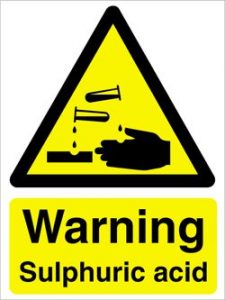 MIL-STD-810G covers exposure to an Acidic Atmosphere in Method 518.1. Acidic atmospheres are of increasing concern, especially for materiel in the vicinity of industrial areas or near the exhausts of fuel burning devices. Method 518.1 is comprised of 7 pages. This Method is used to determine the resistance of materials and protective coatings to corrosive atmospheres. This Method is appropriate for materiel likely to be stored or operated in areas where acidic atmospheres exist, such as industrial areas or near the exhausts of any fuel-burning device. Note this method is not a replacement for the salt fog method, nor is it suitable for evaluating the effects of hydrogen sulfide that readily oxidizes in the test environment to form sulfur dioxide. Caution: Although salt fog chambers are usually used for this test, introducing an acidic or sulfur dioxide atmosphere in a salt fog chamber may contaminate the chamber for future salt fog tests. Some problems as a result of an acidic environment include:
MIL-STD-810G covers exposure to an Acidic Atmosphere in Method 518.1. Acidic atmospheres are of increasing concern, especially for materiel in the vicinity of industrial areas or near the exhausts of fuel burning devices. Method 518.1 is comprised of 7 pages. This Method is used to determine the resistance of materials and protective coatings to corrosive atmospheres. This Method is appropriate for materiel likely to be stored or operated in areas where acidic atmospheres exist, such as industrial areas or near the exhausts of any fuel-burning device. Note this method is not a replacement for the salt fog method, nor is it suitable for evaluating the effects of hydrogen sulfide that readily oxidizes in the test environment to form sulfur dioxide. Caution: Although salt fog chambers are usually used for this test, introducing an acidic or sulfur dioxide atmosphere in a salt fog chamber may contaminate the chamber for future salt fog tests. Some problems as a result of an acidic environment include:
- Chemical attack of surface finishes and non-metallic materials.
- Corrosion of metals.
- Pitting of cement and optics.
This Method should be applied late in a products test cycle. Also, separate items should be tested for Salt Fog. Two test durations are suggested. For infrequent periods of exposure, three 2-hour spraying periods with 22 hours storage after each is sufficient. To represent approximately 10 years natural exposure in a moist, highly industrial area, or a shorter period in close proximity to vehicle exhaust systems, particularly ship funnel exhausts where the potential acidity is significantly higher, four 2-hour spraying periods with 7 days storage after each is sufficient. The actual test is similar to Method 509.5 (Salt Fog) in that the acid solution is atomized into a fog and blown through a test chamber.
